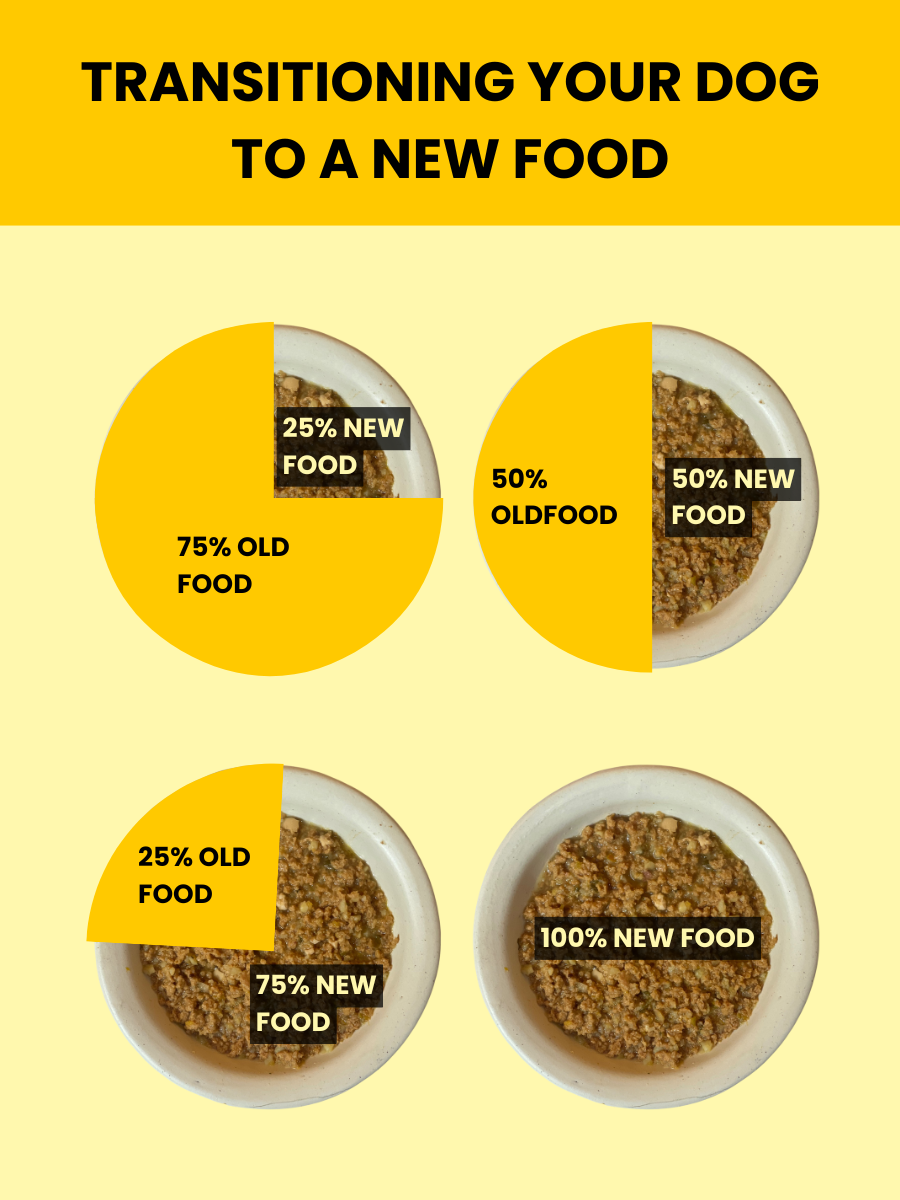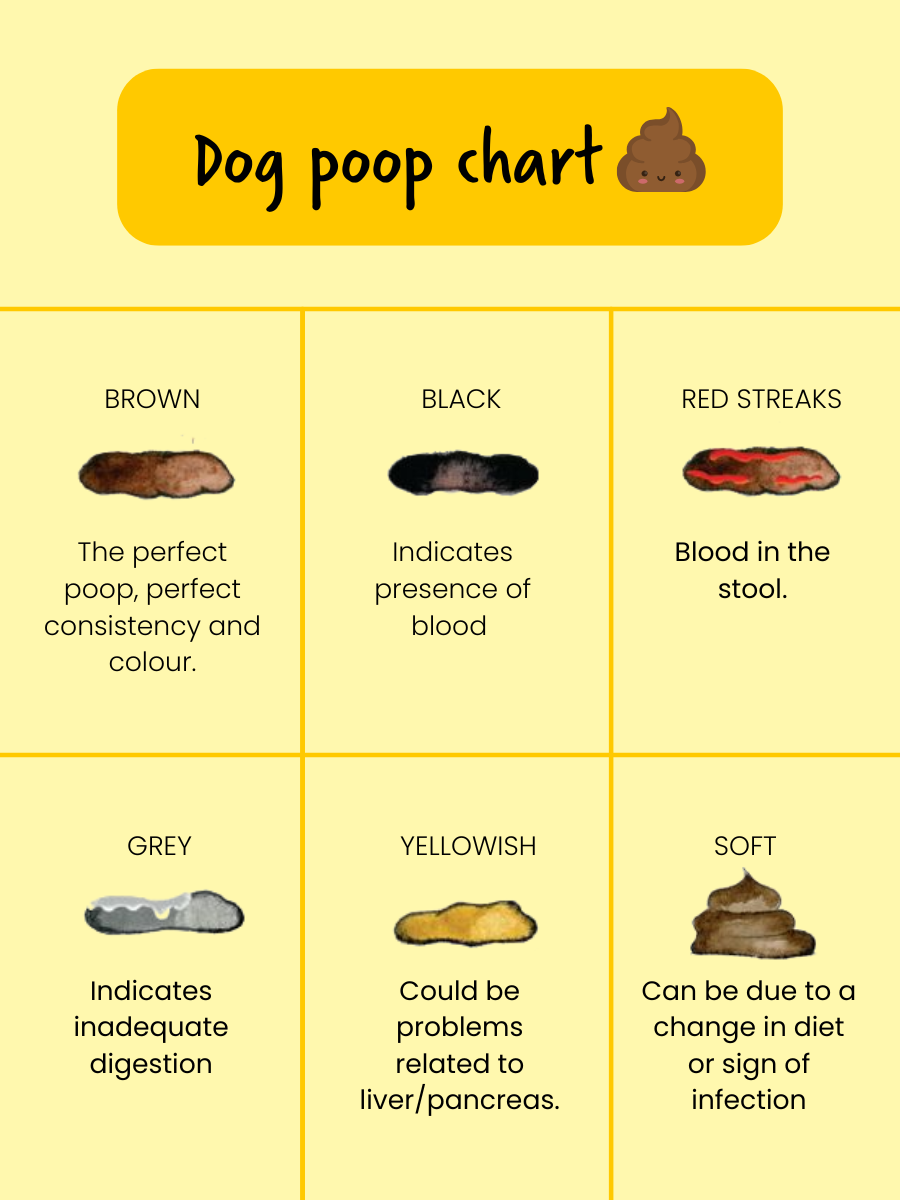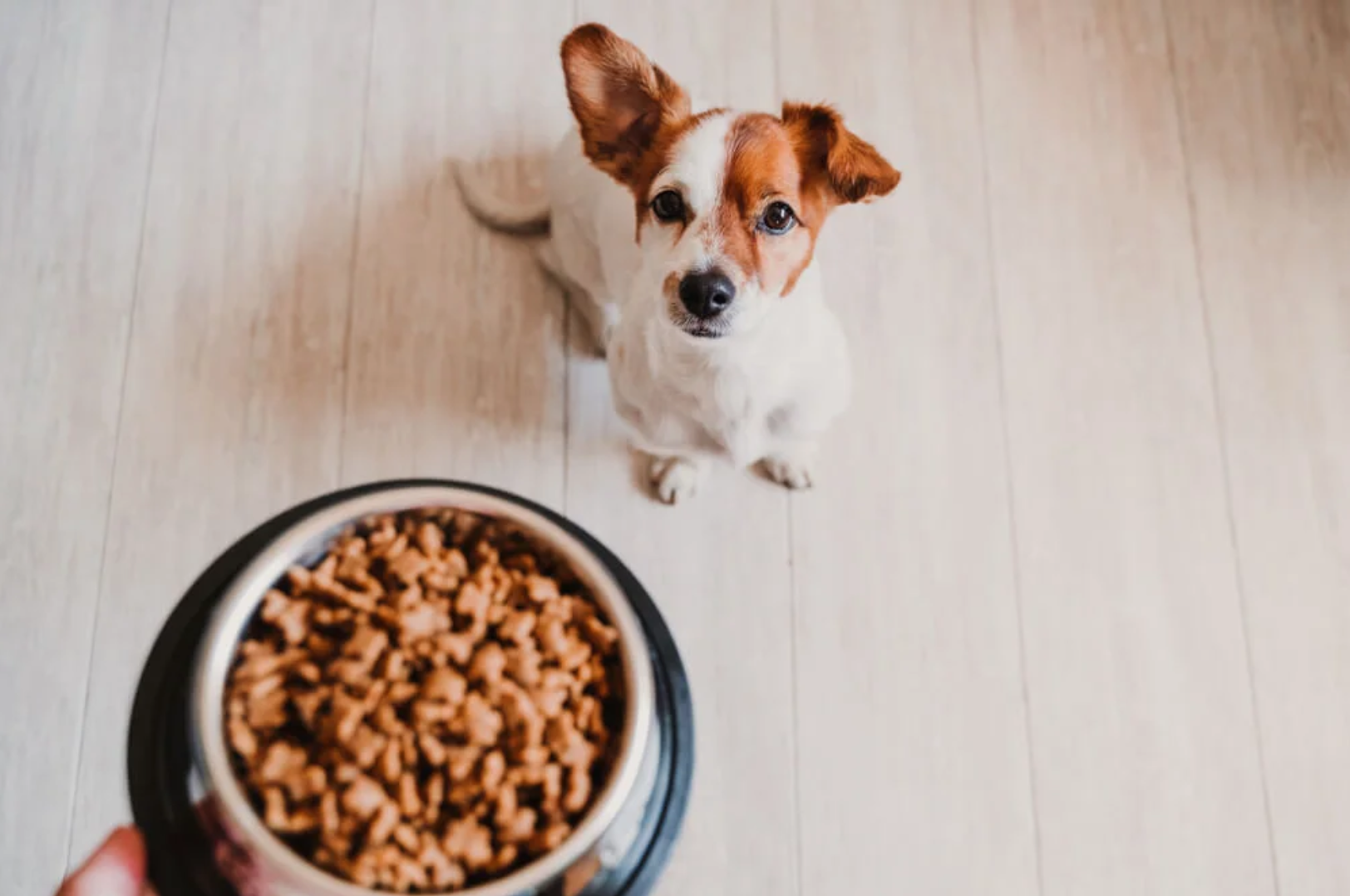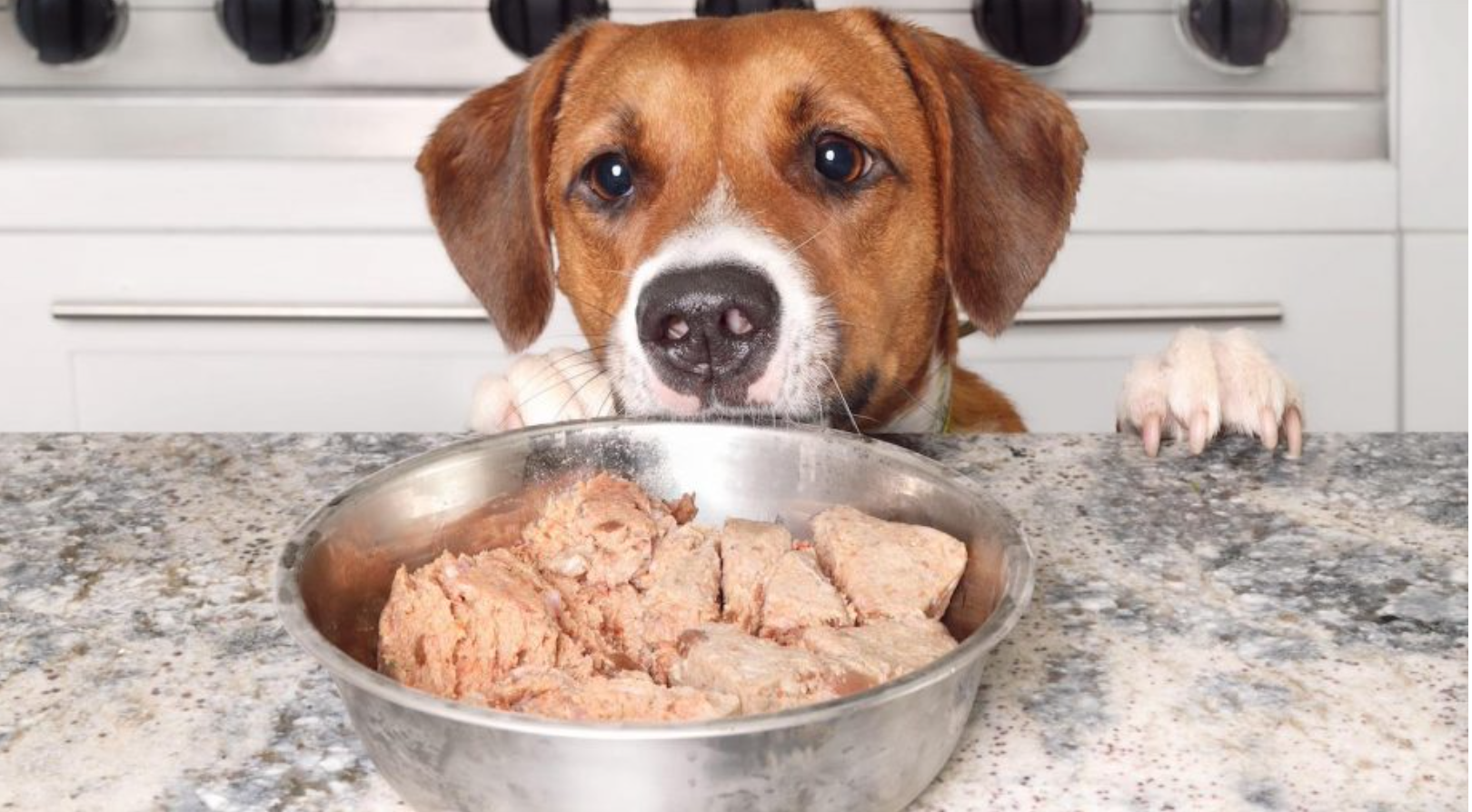Transitioning dog food is the most important step in keeping your dog on a balanced diet. This involves gradually introducing new foods to your pet, helping prevent stomach issues and thus making for a smoother transition to the new diet. Though challenging, transitioning has many benefits, which include enhanced digestion and more food acceptance.
In this article, we examine why to provide step-by-step instructions, troubleshooting hints, and useful ideas for a smooth diet transition.
When and Why Transitioning Dog Food Becomes Necessary?
The terms "transitioning" and "switching" have different implications when it comes to dog food. Transitioning dog food involves gradually introducing new food over a period of seven to ten days to help your dog's digestive tract adjust.
However, changing dog food usually implies a sudden shift, and this is often done based on medical reasons such as allergies or urgent nutritional needs, and should always be supervised by a veterinarian.
A gradual shift lessens the likelihood of upset stomachs, vomiting, or diarrhoea and promotes good digestion and smooth transfer to the new diet.
When to Transition Dog Food?
There are a number of important situations where switching dog food is required:
- Life Stages
Moving from one dog food to another is sometimes required as dogs age through various stages of their life. Puppies, being born to a different environment, have specific requirements tending to their rapid growth and development, such that they would need to be transitioned to adult dog food after around their first year, or a bit further for larger breeds.
As a dog ages, its nutritional requirements change again, and transitioning the dog to senior food is beneficial when the dog reaches age seven in managing health issues associated with aging, such as joint health and weight management. These transitions are most important in maintaining optimal health throughout its entire life.
- Health Changes
Health changes can also pave the way for a new diet. If a dog develops a medical condition like obesity, diabetes, or kidney problems, veterinarians commonly recommend a diet specifically constructed for managing these conditions.
The essence of dietary changes lies in the medical reasoning so that the general health of the dog is protected as well as during preventative measures against further complications. The regular home visits from veterinary doctors help to identify when the dietary changes have to be made.
- Dietary Adjustments
The key to success in switching types of dog food-wet to dry, vegan to nonvegan-is to do so gently, because technical changes can upset the dog's tummy. To keep it gentle, and avoid digestive upsets, one should transition to the new food over about one week's time
Replace one-seventh of the previous food with the new food each day and decrease the old food each day. This is quite a reasonable pace that gives the digestive system enough time to catch up without causing digestive stress.
- Allergies or Sensitivities
Signs of allergy or sensitivity in dogs include, but are not limited to, scratching and gastrointestinal upset. If these symptoms are present, the owner must consider changing the food formulation.
The identification of the ingredient or ingredients causing the reaction is critical, and the assistance of a veterinarian would help guide towards the most appropriate alternative diet. The shift into new food types should be closely monitored to ensure control of allergy and comfort of the dog.
Why is Transitioning Dog Food Necessary?
Transitioning your dog's food is essential to ensure that your dog gets adequate nutrients according to their life stage and health needs. As dogs grow, nutritional demands change with age; for example, puppies in the growth stage need extra calories and a well-balanced diet to aid fast development, while adults maintain their body weight and energy levels. Senior dogs may require less-calorie-containing foods to help manage weight while providing the nutrients needed to support aging joints and overall health.
Gradual transition is pivotal to avoid gastrointestinal upset, which may include diarrhea or vomiting. Sudden dietary changes can shock the dog's digestive system leading to gastrointestinal distress. It is better to introduce the new food slowly to allow the dog's microbiome to adjust and explain issues with food acceptance, especially with texture and taste.
Moreover, this transition also helps reduce the stress of moving both the dog and its owner from varying brands, diets, or budgets. Taking care of this process enables both you and the dog to stay comfortable and healthy while introducing new diets.
Overall, transitions are not preferences; they are vital for the sustenance of life through the different life stages of a dog.
How to Transition Dog Food Safely: Step-by-step Guide
1. Start Gradually
Transition to the new food by mixing it in with the normal food for a period of 7 to 10 days, increasing the amount of new food each day. This gradual process allows sufficient time for your dog to adjust to the change without being shocked.
Here is an example transition table:
- Day 1-2: 75% old food and 25% new food.
- Day 3-4: 50% old and 50% new food.
- Day 5-6: 25% old food and 75% new food.
- Day 7-10: 100% new food.

2. Monitor Your Dog’s Reaction
Throughout, it is important to observe them keenly. Observe the quality of the stool: healthy ones are firm and well-formed. Diarrhea or constipated stool may indicate that the new food is not suitable. Pay attention to signs of an ineffective appetite; if your dog is reluctant to eat, slow the transition. Look out for signs of vomiting or lethargy because at times they imply discomfort. These observations guarantee a smoother transition and continuity in the dog's health. .
3. Provide Fresh Water
Make sure that during the transition your dog gets plenty of fresh water, because food changes may alter their hydration levels. Proper hydration improves digestion and encompasses all aspects of good health.
4. Consult a Vet for Customisation
If your dog has specific dietary restrictions or necessitates special care, consult your veterinarian directly for personal advice in the transition. A veterinarian will be able to advise you on how best to overcome hurdles when changing the food type so that your dog's dietary demands can be satisfied while making the switch.
By following these steps and being attentive to your dog's needs, you can facilitate a safe and effective transition to their new food.
Dog Diet Changes: Challenges and How to Overcome Them
Common Challenges
Transitioning your dog to a new diet is often quite a challenge. Digestive upset is one of the most common problems, often presented as diarrhea or vomiting due to sudden changes that shock your dog's digestive system.
Another difficulty is food refusal-almost like your dogs turning up their noses at another unfamiliar flavor or texture. This always frustrates pet owners hoping for improved nutrition for their pets.
Allergic reactions to new ingredients with symptoms like itching, rashes, or disharmony in the gastrointestinal area may occur. A further change could be behavioral, with anxiety arising at mealtime during the transition.
Troubleshooting Tips
To remedy these, it might be worth prolonging the transition period if any signs do appear. A seven-to-10-day adjustment time is reasonable and will give your dog's digestion to acclimatize to this new diet. Establishing different flavors or textures within the same line of food should help entice your dog to eat it. New treats accompanying the new food may also be enticing at mealtimes.

You can chart the consistency of your dog's stool. A "poop chart" is sometimes very helpful during a transition period to learn about canine digestive health. Do visit the veterinarian should problems persist even with these changes.
Transitioning Dog Food: Special Considerations for Different Scenarios
1. Transitioning from Wet to Dry Food
There is a need to be a little gradual while switching from wet food to dry food, as sudden switching of these feeds can upset digestion. During the transition process, the owner should start with 75% wet food with 25% dry food for 3 to 4 days and progressively replace some of the wet food with dry food.
To make dry food more tempting, try lightly warming it and adding either warm water or low-sodium broth to increase its flavor and moisture, making it easier for your dog to get used to the new texture.
2. Transitioning from Dry to Wet Food
All the same, even when switching to wet food, attention is required. Really, wet food comes in on the side of more moisture and lower calories for every gram. That is why portion control becomes very important.
Instead, serving appropriate amounts based on the dog's size and activity level will go a long way in ensuring the dog receives a balanced diet. Wet food must be properly stored, refrigeration for any portion that is not used is important, and use within a few days is the best practice if one wants to ensure freshness.
3. Moving to a Raw Diet
Shifting over to a raw diet should be undertaken with caution and gradual introduction. Start by mixing little bits of raw food with the current diet and work up from there. It is very important to consult your vet when you make the switch, to make sure your pet is getting all the nutrients they need.
Address any health issues that can arise, and develop a smooth transitional plan. Some manufacturers include a better grade of lamb or beef liver. Always ensure the raw food is not bought directly from the market but rather from a certified company which specializes in raw dog food.
4. Vegan to Non-Vegan (or Vice-Versa)
It is important to manage the protein sources very carefully while switching diets from non-vegan to vegan or from vegan to non-vegan. Whichever the type of diet is, make sure that your dog is assured of receiving enough protein and essential nutrients. If you change from a vegan diet to a non-vegan, ensure the gradual introduction of quality animal proteins, and also watch for any allergies or other sensitivities.
On the other hand, if you switch from the standard diet to the vegan one, ensure that your dog receives balanced nutrition by giving a variety of protein sources, such as legumes and grains. You can ask your veterinarian to help with developing a wholesome meal plan that suits your dog's dietary needs while making these transitions.
Dos and Don’ts of Dogs Food Transitioning
- Include a quick-reference table summarizing Dos and Don’ts.
Dos
- Monitor your dog's weight, demeanor, and stool consistency during the transition. Any big alterations could signal digestive problems or that the new meal does not agree with them.
- Maintain a consistent feeding schedule to avoid overeating or undereating. This allows your dog to adjust smoothly to the new food.
- Over the course of 7-10 days, gradually incorporate the new foods into the old ones. A slow introduction lowers the risk of stomach distress.
- If your dog has health concerns, visit a veterinarian for specialized advice on switching to a different food.
Don’ts
- Never abruptly change your dog's food, unless medically required and advised by a veterinarian. To avoid digestive issues, modifications should be made gradually.
- Do not use human food as a substitute for dog food because it may not match their nutritional requirements and may be dangerous.
- Avoid making significant changes to portion sizes. Maintain adequate portion amounts to avoid weight gain or malnutrition.
- Attempt to reduce other stressors throughout the changeover. A peaceful setting allows your dog to more readily adjust to the new diet.
A Final Word
A gradual shift is essential for keeping a healthy and happy dog diet. By studying your dog's behavior and making adjustments as needed, you can ensure a seamless transition to new food. If you are unsure about any of the processes, please seek personalised guidance from a veterinarian.
Follow sploot on Instagram for more advice, and come to our next AMA (Ask Me Anything) sessions and Pup Talks, events!
FAQs on Transitioning Dog Food
How to transition to raw dog food safely?
- Begin by gradually introducing small amounts of raw food mixed with your dog's current diet. Maintain a nutritional balance and ask your veterinarian for advice.
How to transition a dog to a new food without upsetting its stomach?
- Introduce the new food gradually, mixing it in with the old food over 7-10 days, and keep an eye out for any signs of gastric discomfort in your dog.
How long does it take for a dog to adjust to new food?
- It typically takes 7-10 days for your dog to adjust to new food, while some dogs may require a longer transition time.









